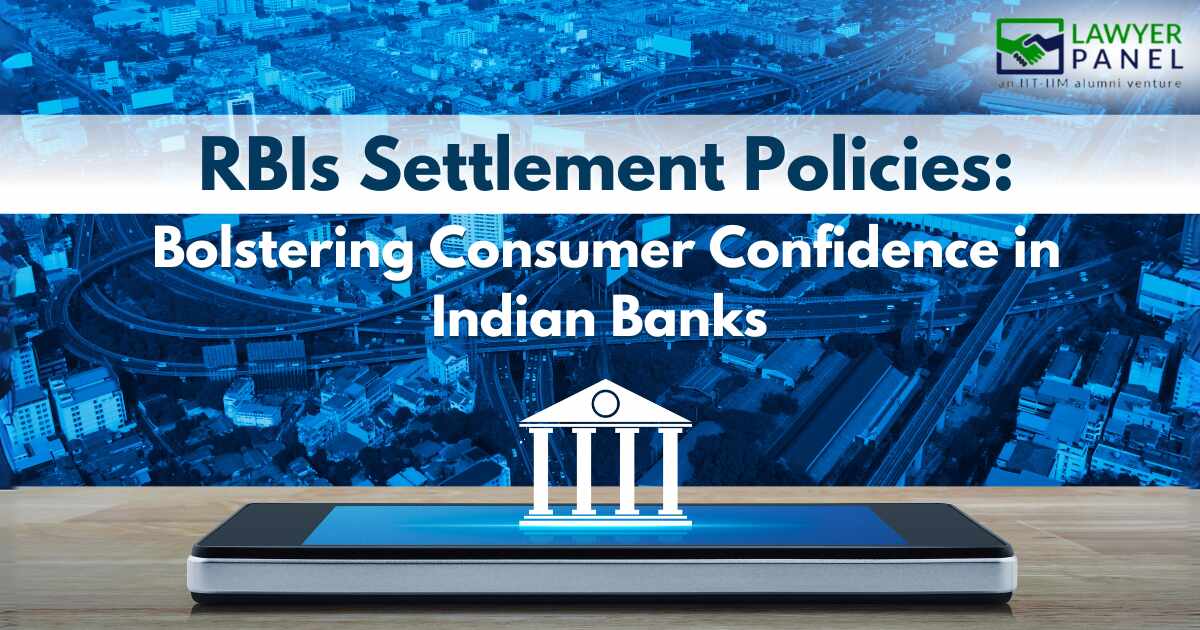Debt Settlement · 9 min read
Non-Performing Assets: RBI Guidelines and Resolutions for Banks
Non-Performing Assets or NPAs in simple terms are those assets that are not bringing any profit to the Banks/ NBFCs. In banking terminology, it is a loan advance for which the principal or the interest payment has remained overdue for a period of 90 days.

RBI defines it “An asset, including a leased asset, becomes non-performing when it ceases to generate income for the bank. A ‘non-performing asset’ (NPA) was defined as a credit facility in respect of which the interest and/ or instalment of principal has remained ‘past due’ for a specified period of time.”
Based on periods of 12 months, the financial institutions and banks further classify the NPAs as:
Substandard assets which have remained an NPA for less than or equal to 12 months
Doubtful assets which have remained an NPA for a period of 12 months
Loss assets are considered as uncollectible and of little value that is cannot be called a bankable asset, although there maybe some recovery value
Resolution of these difficult-to-recover assets is facilitated through one-time settlements mandated by RBI guidelines. These settlements enable banks to close and write off unrecoverable accounts. It’s worth noting that compromise settlements have been established for over 15 years with several RBI circulars advising the banking and finance sector on NPAs settlement.
Willful defaulters and Frauds
All policies, guidelines and cases of settlement are vetted by a Management Committee/ Board of banks and any compromise settlement offered is not available as a matter of Right to the borrowers but is a discretion exercised by the banks and financial institutions based on their commercial judgement. This guideline is prudential as it serves as a safeguard against willful or fraudulent defaulters. These settlements policies are in support to the penal laws of the nation and will not be prejudiced against ongoing or criminal proceedings that might be initiated against the borrower by the lenders. The Board of lenders have absolute authority and oversight of the trends in compromise settlements.
Compromise settlements are recognized as valid resolution mechanism under the Prudential Framework on Resolution of Stressed Assets (dt. June 7, 2019) as per RBI. Recovery is time and energy consuming and does not just dimmish the Banks position undesirably through unproductive assets, it also destroys the CIBIL of their borrowers. Where defaulting is a loss to all parties, settlements are a win-win.
The Settlement Process
Settlements are offered, in reality as a last-minute resolution mechanism where the assets are non-productive and is offered by the discretion of the banks based on their commercial understanding. These policies differ from each lender and based on their CIBIL and repayment history, they can offer a settlement in a lumpsum to these borrowers. The first step is negotiation where on the banks’ offer based on the eligibility of the borrower and their financial situation, and in the instance the borrower agreeing to such offer, the banks will send an offer letter to settle the amount. Where the settlement amount is typical lesser than the total outstanding debt, it is still in the hands of the lender to offer a reduced amount depending of the borrowers situation, health, age and other factors.
The settlement can also be offered to be taken in instalments, and based on the amount of settlement can range form one time to three instalments, though again this is based on the lender’s discretion based on the factors that they consider through their judgement. These facets of the settlement are laid down in the settlement offer letter to ensure both parties have an understanding of the terms and to maintain adherence to the terms and conditions agreed upon by both the parties mutually. The consequence and implication in case of non- compliance are also laid down.
Realities of recovery: Cases in Courts of Law
Though the above process seems rose coated, it is pertinent to understand the exact realities of the recovery process must be understood. As soon as an asset becomes NPA it is considered as a recoverable asset and reminders and visits are made by lenders to understand why the borrower has not made the payment. But some instances, the situation goes out of hands. The landmark case of ICICI Bank v Shanti Devi Sharma & Ors., two agents had harassed the respondent’s son to such an extent that he committed suicide. They had also taken his vehicle, ridiculed him in front of his friends, leading to mockery by members of their neighborhood. The Supreme Court reminded banks and financial institutions that they live in a socialized country and that laws will be administered as the bank and their agents had abetted in the suicide of the son of Shanti Devi.
Though landmark, this is just one case of harassment that has led Courts to remind the banks and financial institutions about the legal implications of employing harassment to recovery loans. Some more case such as these are Cholamandalam Investments v Suresh Kumar, Debanjana Debarman v Branch Manager, State Bank of India & 2 Ors., and Vibhu Bhakru v Standard Chartered Bank all of which emphasize on the stark realities of harassment ranging from threats, assaults to lien over accounts without notification or consent.
The landmark case of ICICI Bank v Shanti Devi Sharma & Ors.
Two agents had harassed the respondent’s son to such an extent that he committed suicide. They had also taken his vehicle, ridiculed him in front of his friends, leading to mockery. The Supreme Court reminded banks and financial institutions that they live in a socialized country and that laws will be administered as the bank and their agents had abetted in the suicide of the son of Shanti Devi.
Though landmark, this is just one case of harassment that has led Courts to remind the banks and financial institutions about the legal implications of employing harassment to recovery loans. Some more case such as these are Cholamandalam Investments v Suresh Kumar, Debanjana Debarman v Branch Manager, State Bank of India & 2 Ors., and Vibhu Bhakru v Standard Chartered Bank all of which emphasize on the stark realities of harassment ranging from threats, assaults to lien over accounts without notification or consent.
Guidelines for Recovery Agents
In order to ensure that the standards are adhered to, all agents representing banks in the collection and recovery process must have a training of 100 Hours, certified in concepts such as customer solicitation, calling hours, privacy and accurately conveying terms and conditions. In many instances, agents breach the privacy of the borrowers, calling not just close relatives or family friends but also neighbors and landlords causing disturbance in the every-day life of not just the borrower but everyone around them. The calling hours should be restricted between 8.00 AM and 7.00 PM and unnecessary visits or frivolous complaints should not be initiated.
There is a great emphasis on not using intimidation or harassment or threats, whether verbal or physical in order to collect debts. Actions such as public humiliation, divulging information about the client to their relatives to pressure them for payment, visiting offices, sending threatening messages or rude calls can have severe consequences and the agents should refrain from behaving so. These incidents can be raised as issues to the grievance redressal cells of the lenders and in the absence of a reply or inadequate actions, the same issue can be raised to the Banking Ombudsman.
Essentials of a Successful Settlement
A successful settlement will be a situation where the lenders are able to get their dues back within the maximum paying capacity of the borrower. The successful settlement strikes a balance between the parties involved reflecting the borrower’s financial capacity and the lenders acknowledgement of the same and agreeing to recover debts in a mutually beneficial manner. A successful settlement will liberate the borrower from debt traps and breaks them out of the continuous and relentless cycle of MAD. The primary benefit is immediate debt relief with which comes relief from payment reminders and visits from agents.
Many believe that settling their dues can damage the credit score of the borrower but in the case of a successful settlement is much better than prolonged default on part of the borrower which damages the score beyond the point of recovery. It can also help the borrower avoid bankruptcy and through proper negotiations uplift the financial stability in the long run.
Settlement: The Good part
All settlement offers lay down the consequences of non-compliance to the settlement, most including legal recourse to recover dues and filing of criminal complaints. But on the compliance of the settlement agreed mutually upon by the parties will bring out benefits as above-mentioned.
It is pertinent to understand that penal measures applicable in recovering dues in the case of fraudulent and willful default will be applicable even when the parties enter into compromise. Only after the successful execution of the settlement will the account be finally closed. These penal measures also include that any willful or fraudulent defaulters will not be provided any additional facilities or bank finance for a period of five years from the date of full payment of the settlement amount.
Conclusion
Though falling in a debt trap is hard, ensuring that payments are made to the lenders are of utmost importance and in cases such an arrangement becomes impossible, the banks may offer a settlement to the borrowers considering their financial situation, age, health and other factors. But this discretion must be considered carefully as it has its benefits and losses. Where it can save further damage to the CIBIL Score, it does debar further banking facilities to the defaulter. It should be kept in mind that banks can pursue legal recourse to recover their dues but that does not allow them or their agents to harass or intimidate the borrower.
The borrower also has rights and legal recourses in case of harassment by recovery agents. Settlement is a mutually beneficial scheme introduced by the RBI so that there is prudent attention by both the parties against oversight in loan default which cause damages not just to the banks but also the borrower individually. In conclusion, settling debts becomes the pragmatic ladder for both lenders and borrowers, offering a step to financial relief while cautioning against the lingering notes of default consequences.



